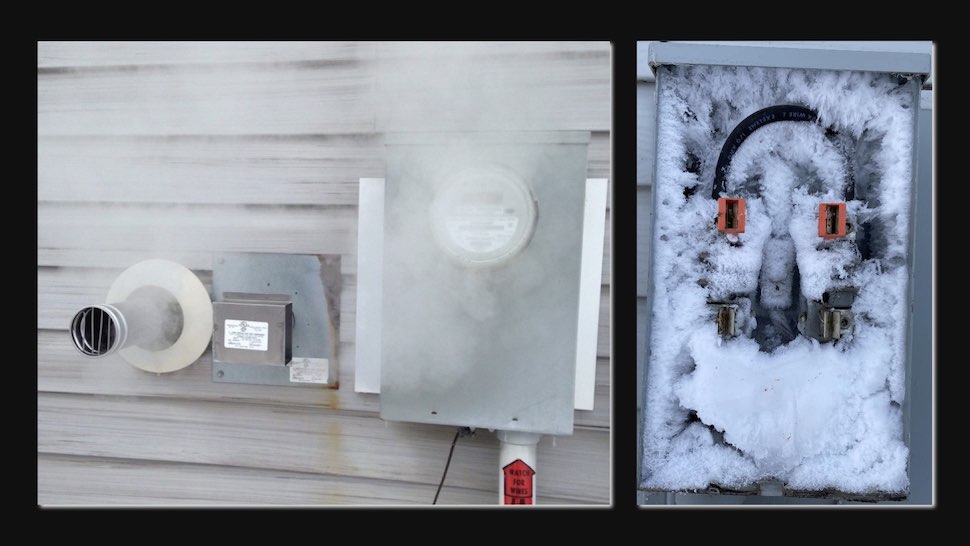
Articles
Features
Code File
Codes & Standards
Wiring - Cabling - Devices
Electrical service hazards – Code File, Winter 2023
February 13, 2023 | By David Pilon

February 13, 2023 – A facility’s electrical service represents a potentially hazardous energy source, which is why the CE Code demands we mitigate the risk of shock and fire. The service consists of two parts: the utility/supply service, and the consumer’s service.
The consumer’s service encompasses all those things that are typically installed by the electrical contractor, from the main service box/breaker to the utility demarcation point. This may include a weather head, bottom terminals of an underground meter socket, splitter cabinet on an exterior wall, etc.
The utility service may include things like the service conduit, through bolt, top terminals of an underground meter socket, an exterior splitter cabinet—all of which are located on their side of the demarcation point.
Until they are connected to the customer’s main breaker, the only thing protecting conductors from overcurrent or overload is the utility’s transformer on the high side. Anything shorting to them, or coming into contact with them, is simply seen as load. This can result in unwanted current flow on equipment, through the earth, etc.
We want our conductors to be installed in a way that prevents unintended contact. This includes clearances from openings such as doors and windows, porches, or flat roofs, and involves limiting the distance conductors can be run into a facility prior to entering the main overcurrent protection. (They are allowed to enter the building for connection to the service box—as close as reasonably practicable—but, even then, that compartment needs to be barriered to ensure safety after the installation has been energized.)
The height of the conductors across alleys and driveways, and proximity to pedestrians, is also important. High loads in alleys, or kids playing on structures in their yards, are both safety concerns. When located underground, the depth of the trench and the addition of sand helps provide protection for the conductors, and marking tape helps inform owners before they dig up their yards.
And, as shown in these photos, we want to prevent moisture build-up from improperly sealed service conduits, or ice build-up from nearby vents.

PHOTO (left): The cold weather clearly shows us that this electrical service is located too close to a vent. In some instances, we’ve found ice blocks hanging from meters that resulted in a partial disconnection of the service. PHOTO (right): A common service failure is condensation in the raceway, and winter weather is great for spotting it. While there is debate as to whether we seal in the socket or in the panel, not sealing at all is the biggest problem. Source: D. Pilon.
Single-point grounding is required to ensure that only fault currents flow on the bond conductor, and only the grounded circuit conductors carry any imbalanced load. This is how we eliminate as many new or existing parallel paths from neutral currents as possible.
Our goal is to protect the unprotected service installation from a possible fault due to contact with a conductive medium, and ensure a proper installation that protects the installer and end users from possible shock and fire.

David Pilon is manager, Electrical Inspections, at Technical Safety Authority, Saskatchewan (TSASK). He also serves as vice-chair of the Canadian Certified Electrical Inspector (CCEI) committee of the International Association of Electrical Inspectors (IAEI), Canadian Section. He can be reached at david.pilon@tsask.ca.
You’ll find all Back Issues of Electrical Business Magazine in our Digital Archive.
Print this page
